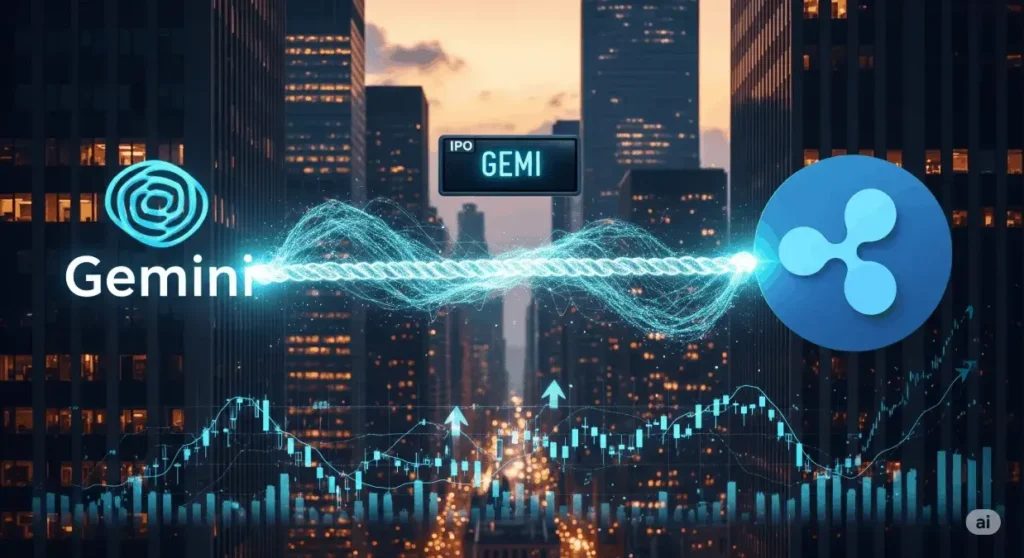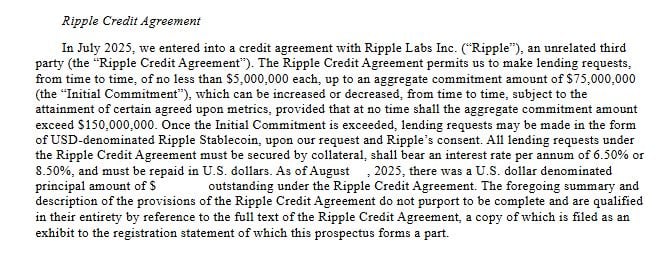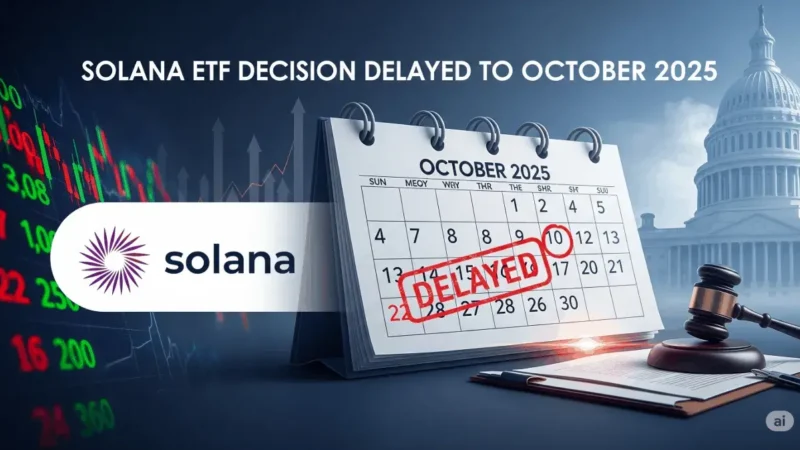Gemini’s IPO and the Ripple Lifeline: A Strategic Credit Line to Navigate Financial Headwinds

The world of digital finance is witnessing a remarkable convergence of innovation and traditional capital markets. Gemini, one of the most prominent U.S.-based cryptocurrency exchanges, is at the forefront of this evolution, preparing for its public debut on the Nasdaq. However, its path to an initial public offering (IPO) is not without significant challenges. As the company files its public S-1, it has revealed a cash-strapped balance sheet and a remarkable net loss in the first half of 2025. This backdrop makes a newly secured financial partnership with Ripple Labs not just noteworthy, but fundamentally critical. The agreement, which provides a flexible and scalable credit line, offers a strategic lifeline aimed at stabilizing the exchange’s finances and supporting its public market ambitions.
This collaboration is more than a simple loan; it is a powerful signal of the changing dynamics within the crypto industry. The agreement not only provides liquidity but also strengthens the institutional standing of Ripple’s new stablecoin, RLUSD, which is set to play a key role in the future of the partnership. As Gemini navigates a complex financial landscape and prepares to become the third U.S. crypto exchange to list on a public market after Coinbase and Bullish, this strategic credit line from Ripple is a testament to the new era of inter-company collaboration and financial innovation in the digital asset space.
The Financial Headwinds Facing Gemini
The S-1 filing paints a clear and challenging picture of Gemini’s financial health. The exchange registered a staggering net loss of $282.5 million during the first six months of 2025. This figure represents a dramatic increase from the $41.4 million loss recorded during the same period in 2024, highlighting a rapid deterioration of its financial position. The mounting losses have strained the company’s cash reserves, which had dwindled to $162 million in mid-2025. Juxtaposed against its liabilities of over $2 billion, the financial strain is evident.
The purpose of the IPO is fundamentally to address this financial imbalance. The company’s filing explicitly states that the proceeds from the IPO share sale are primarily meant to pay off existing debt liabilities and normalize operational funding. This strategic use of public capital differentiates Gemini’s IPO from growth-focused offerings and positions it as a necessary step for financial restructuring. The company is seeking to use the public markets to fortify its balance sheet, a move that speaks volumes about the level of financial pressure it is under. This financial context makes the new credit line a crucial component of its broader strategy to regain stability.
A Strategic Partnership: The Ripple Credit Line
The centerpiece of Gemini’s pre-IPO financial maneuvering is the $75 million credit line from Ripple Labs. The agreement is a revolving facility, meaning Gemini can borrow in increments as needed, with each draw being at least $5 million. The borrowing comes at a competitive annual interest rate capped at 8.5%, which is a favorable term given Gemini’s cash-strapped situation. The S-1 filing also confirmed that Gemini has already utilized this facility for its liquidity needs, underscoring its immediate importance to the exchange’s operations.

The agreement’s full potential, however, is even more significant. Under the terms, the initial $75 million cap can be increased to $150 million upon the satisfaction of specific conditions. A key element of this expansion is the use of Ripple’s new stablecoin, RLUSD. While initial borrowings are in U.S. dollars, any loans above the $75 million threshold will be drawn in RLUSD. This provision is a game-changer for both companies. For Gemini, it provides a crucial and potentially expanded source of liquidity. For Ripple, it cements RLUSD’s standing by integrating it directly into the financial operations of one of the world’s leading crypto exchanges. This deliberate financial partnership demonstrates Ripple’s vision to expand the utility and adoption of its stablecoin beyond simple trading, using it as a foundational financial instrument.
RLUSD and the Stablecoin Race
Ripple’s stablecoin, RLUSD, debuted in late 2024 and has been steadily gaining momentum. It is a dollar-pegged stablecoin built on both the XRP Ledger and the Ethereum blockchain, giving it broad compatibility and institutional appeal. Unlike some competitors, RLUSD’s launch was accompanied by a strong emphasis on regulatory compliance and transparency, with monthly third-party attestations of its reserves. By allowing Gemini to pay back parts of its loan in RLUSD, Ripple is showcasing the stablecoin’s utility in a real-world, high-stakes financial context.
This move adds another dimension to Ripple’s broader strategy. The company, which recently stated it has no short-term IPO ambitions, is focusing on strategic acquisitions and partnerships to grow its ecosystem. By having a major public-bound exchange like Gemini use RLUSD, Ripple is taking a powerful step toward challenging the dominance of stablecoins like USDC and USDT. The partnership not only enhances RLUSD’s market standing but also adds increased liquidity and credibility to the token, which is a critical step for a stablecoin vying for a top position in the market.
A New Chapter for U.S. Crypto Exchanges
If successful, Gemini will join Coinbase and Bullish as the third publicly listed U.S. crypto exchange. This move marks a significant moment for the industry, as it provides traditional investors with more avenues to gain exposure to the digital asset space through a regulated vehicle. While Coinbase’s 2021 IPO was a landmark event that occurred during a major bull run, Gemini is entering the public market under very different conditions, which may test investor appetite for crypto-related equities. The fact that the offering is being led by financial titans like Goldman Sachs, Citi, Morgan Stanley, and Cantor Fitzgerald, however, signals a growing mainstream acceptance of the crypto industry.
Gemini’s IPO also shines a light on the complex regulatory environment in the U.S. The company’s financial restructuring, which includes splitting operations between its New York-based Gemini Trust and a new Florida-based entity, Moonbase, is a direct response to stringent state-level licensing requirements. This dual-state operational model is a strategic move designed to navigate the patchwork of U.S. regulations while maintaining compliance and operational efficiency. The IPO, and the financial stability it aims to provide, are crucial for Gemini to continue its efforts to secure and maintain these state-specific licenses. The successful implementation of its financial strategy, including the management of its credit line, is paramount for its long-term viability as a publicly traded company.
Stay informed, read the latest news right now!
Conclusion: A Bet on the Future of Regulated Crypto
Gemini’s IPO filing, its substantial net losses, and the newfound partnership with Ripple paint a complex but compelling picture. The decision to secure a credit line from Ripple is a masterclass in strategic maneuvering, addressing immediate liquidity needs while also forging a powerful alliance that could benefit both companies for years to come. This is a story not just of a struggling company seeking a bailout, but of two major crypto players betting on a future where digital assets and traditional finance are inextricably linked. The credit line serves as a bridge, connecting Gemini’s immediate need for capital with Ripple’s long-term vision for its stablecoin. The success of Gemini’s IPO will be a bellwether for the public markets’ readiness to embrace the next generation of regulated, transparent, and financially sound digital asset firms.






